THEY SAY sex sells, so why on earth is the divisively designed Mitsubishi Triton a regular podium visitor in the pick-up truck sales race?

Look past the styling and even a cursory glance at the Thai-made Triton Exceed’s spec sheet will reveal several compelling truths.
At $48,000 all-in, the range flagship comfortably undercuts most mid-level rivals, and then packs a wallop with sat-nav, leather, heated front seats, climate control, reverse camera, Apple CarPlay/Android Auto, DAB+ digital radio, HDMI port, paddle shifters, keyless entry/start, HID headlights, side steps and a sports bar. Box-tickers will run out of ink cataloguing this.
And that’s on top of Mitsubishi’s five-year/ 100,000km warranty. It’s classic more-for-less marketing. Even smaller alloys than the class norm (at 17 inches) work quite nicely with the Triton’s tighter proportions.
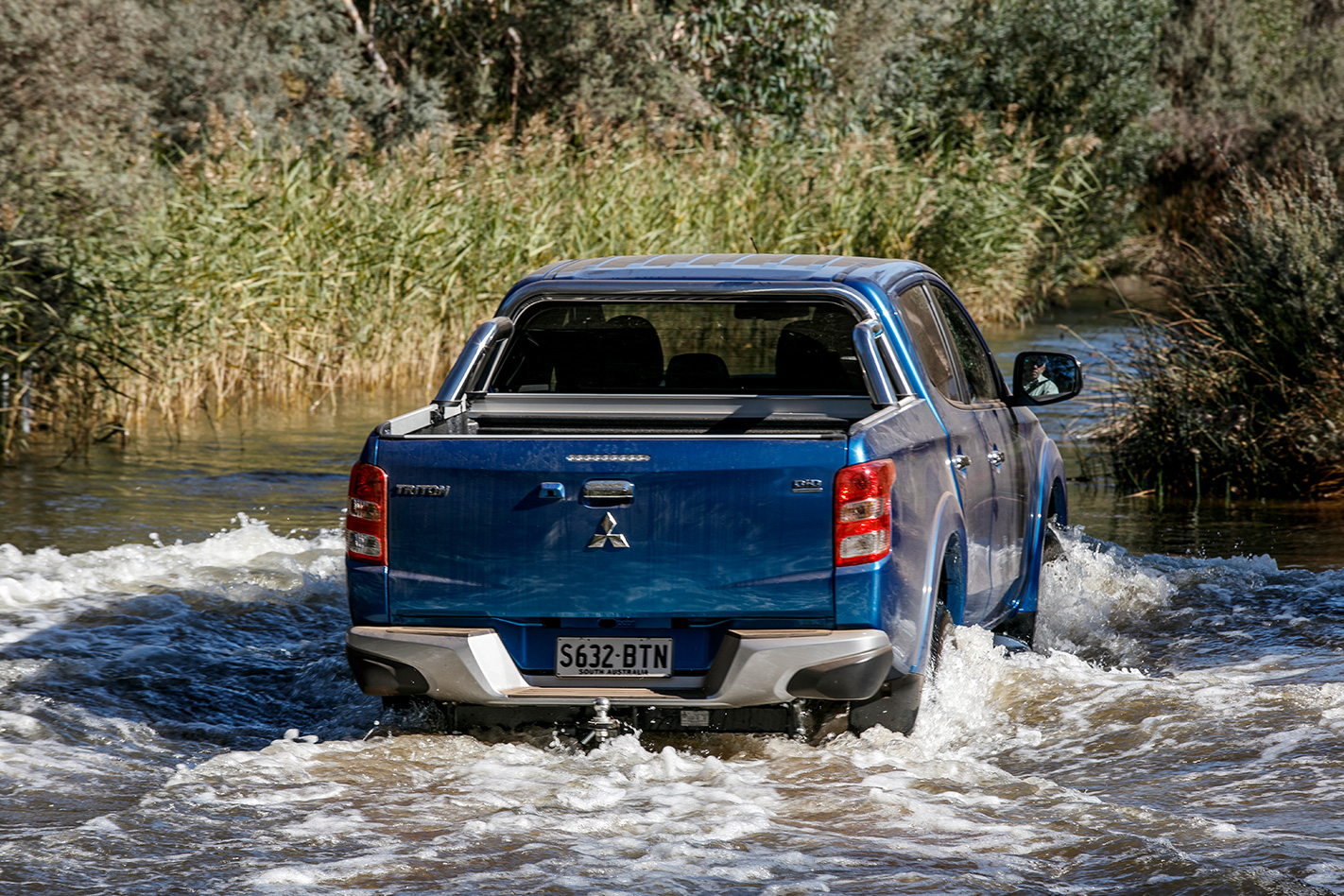
But beyond the low price and high features, the Exceed also surpasses expectations by being consistently capable in almost every area. And that’s a reflection on Mitsubishi’s expertise in light trucks, since this year marks 40 years of the L200/Triton.
Take the packaging. Though among the smallest and narrowest of the assembled contenders (as well as the oldest, as the current fifth-gen Triton released in 2015 is actually a reskin and revamp of the 2006 Mk4), the Exceed is still amply accommodating, thanks in part to well-padded seats, a thoughtfully presented dashboard boasting clear instruments, logical control placement, ample compartments to keep stuff in, and a fine driving position. Not the last word in modernity or style, it’s still all screwed together well and seemingly made to last. A digital speedo wouldn’t go amiss, though.
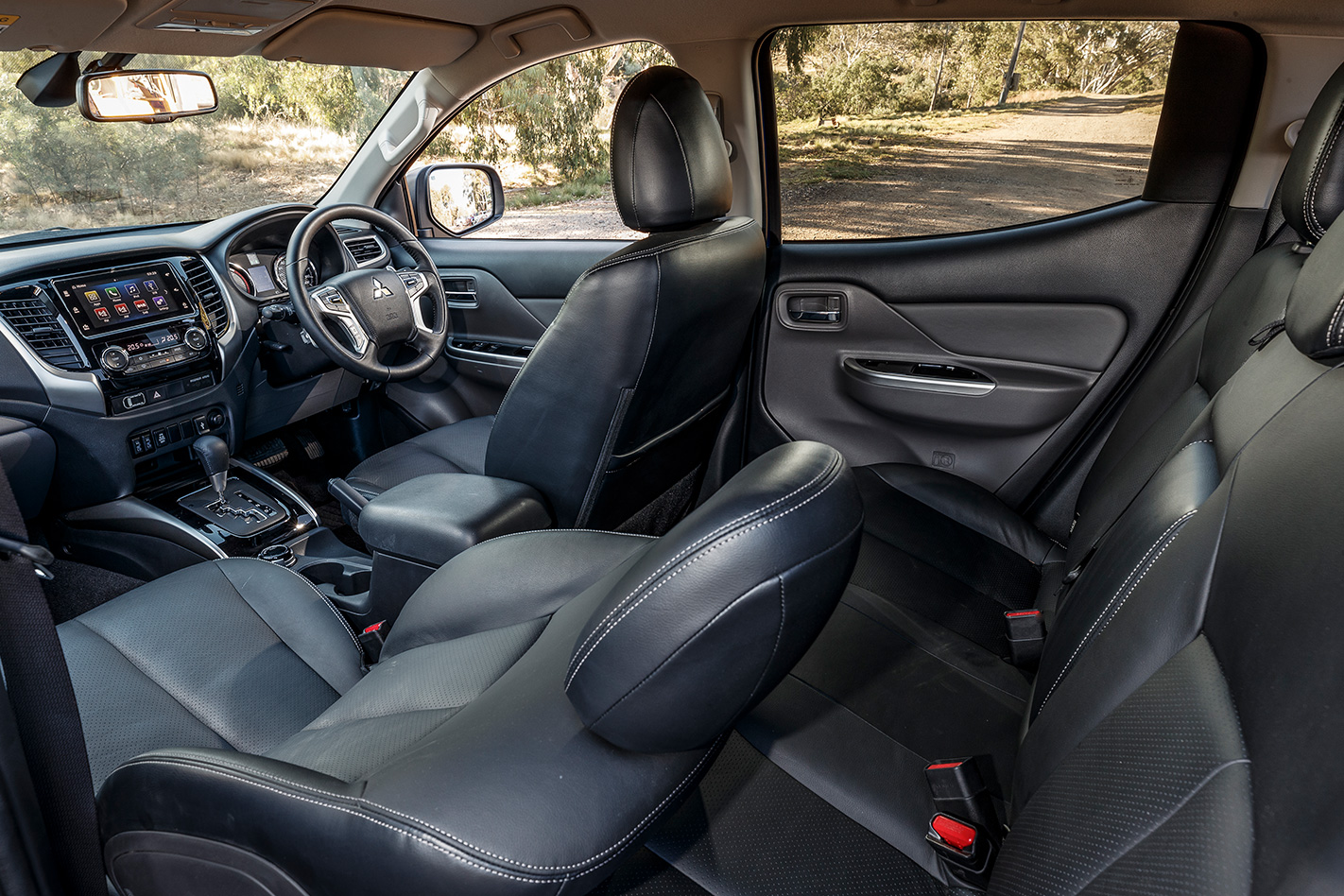
Perhaps unexpectedly, considering its advancing years underneath, the Triton’s a bit of a treat to drive on the road, offering punchy diesel flexibility (keeping the hard-charging Colorado and Navara honest, if not the runaway Amarok, in its 9.8sec-to-100km/h performance), combined with what is adequate fuel consumption for something with just five forward gears. Clearly each ratio has been well chosen. Lag is minimal, there’s heaps of oomph readily available for easy overtaking, and mechanical refinement at speed is commendable.
There’s more too, like fairly direct and connected steering, assuredly contained handling, confidence-building roadholding, and a firm but never jarring ride (no doubt the smaller wheels help here). As in most areas, the Mitsubishi rarely puts a foot wrong dynamically. The set of components may not be the newest but they obviously still work well.
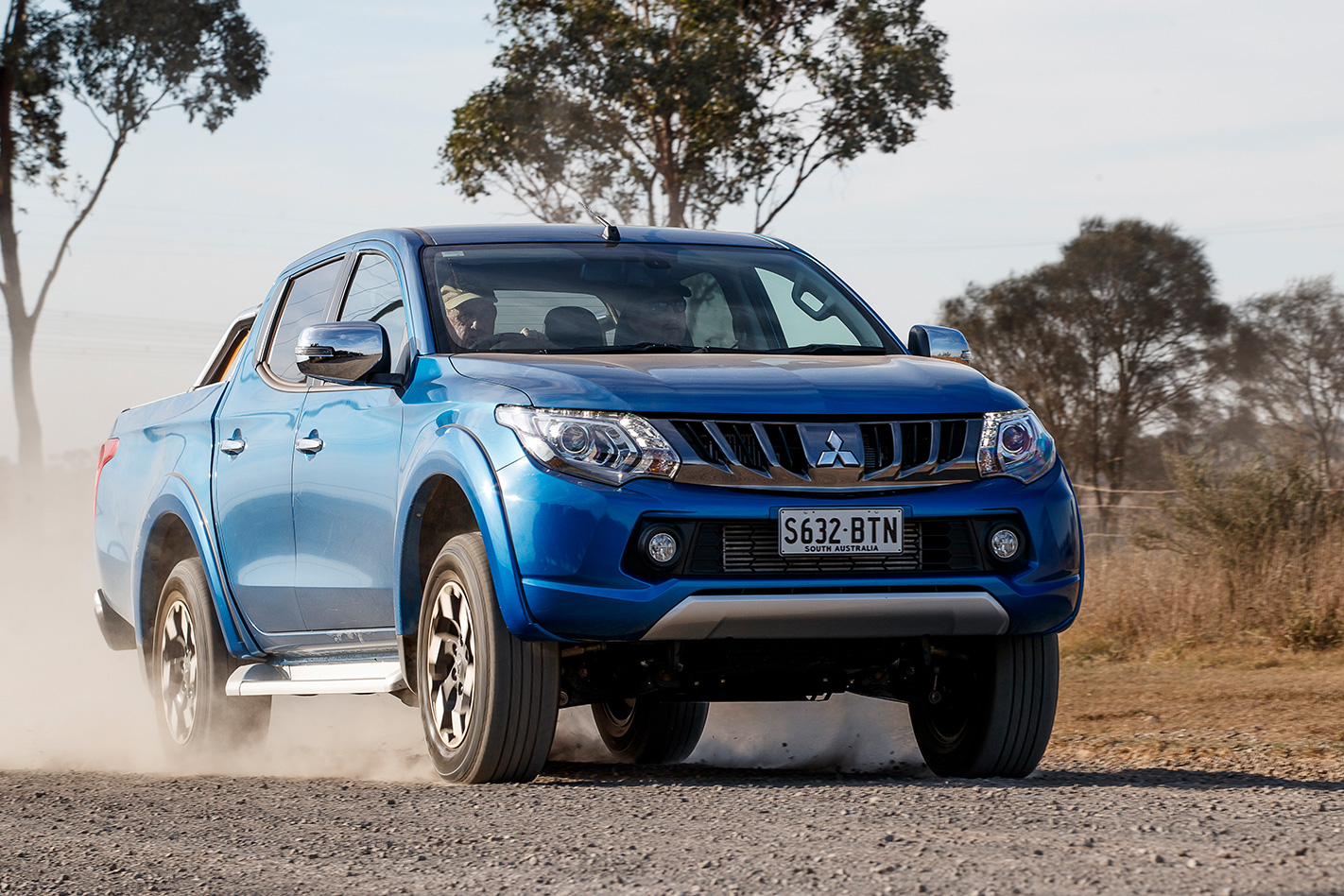
It’s only when you dig a little deeper that the Triton’s lack of polish becomes really apparent. Compared with the larger and more civilised trucks on test, there is no real respite from that firm ride for rear-seat passengers, cushion support favours the smaller statured out back, advanced driver-assist safety tech like AEB and adaptive cruise control simply don’t exist and the diesel at idle is a long way from hushed.
Speaking of seeking the serenity, the Mitsubishi turns out to be one of those quiet achievers that grows in estimation long after the bells and whistles, and low asking price, have grabbed your attention. Maybe our expectations were set lower than in the others, but as each tester spent more time in the Triton, it became clear that real beauty does exist beyond the gawky styling.
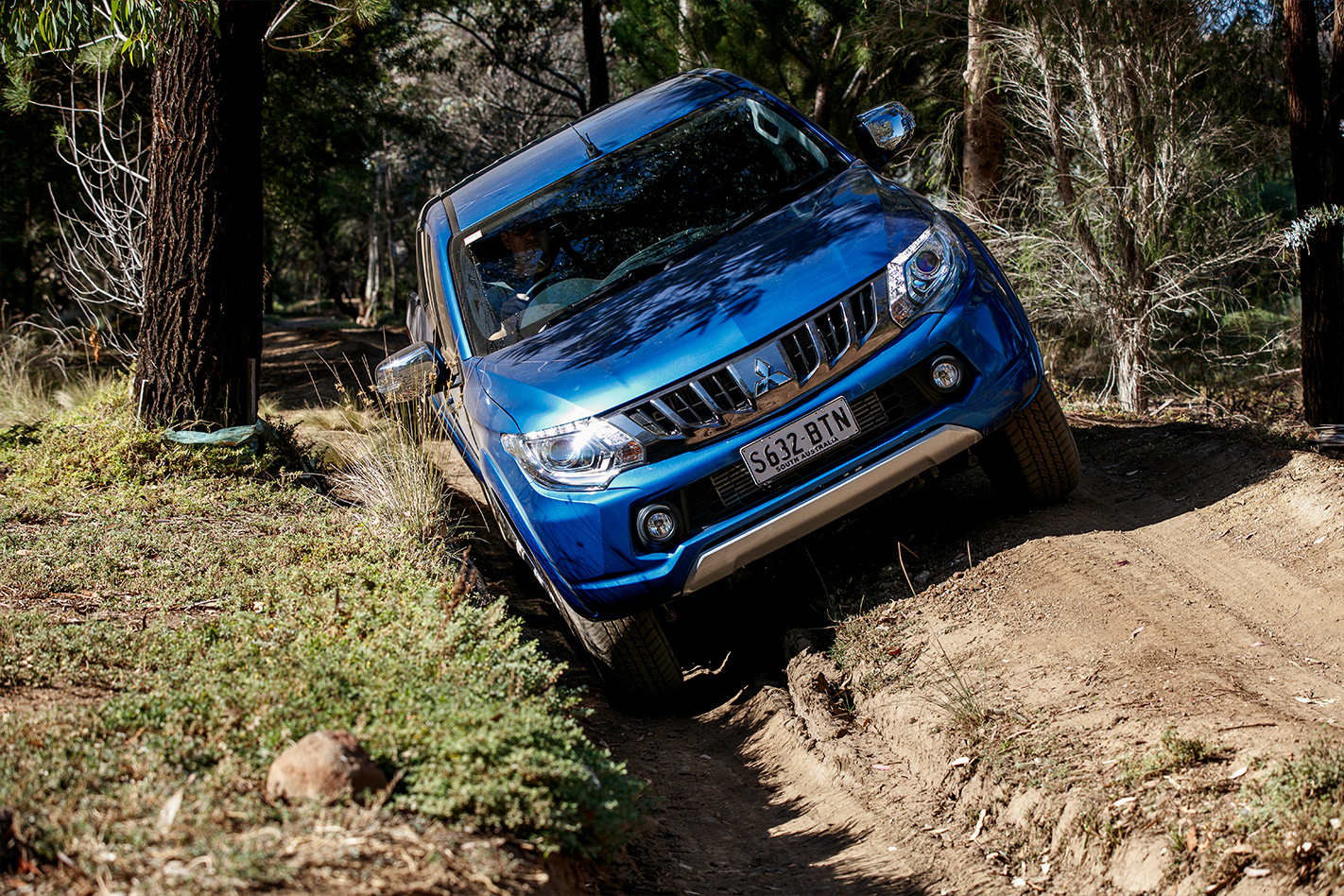
Not so long ago, Mitsubishi was one of our local manufacturers, offering honest, no-nonsense value transportation for generations of Australians. And some of those character traits remain in today’s Triton. Its appeal is anything but skin deep.
SPECS
Price $48,000 Engine 2442cc 4cyl, dohc, 16v, TD Power 133kW @ 3500rpm Torque 430Nm @ 2500rpm Transmission 5-speed automatic Dimensions (L/W/H/W-B) 5280/1815/1780/3000mm Weight 1955kg Tray capacity 945kg Braked towing capacity 3100kg Unbraked towing capacity 750kg Ground clearance 205mm Tyres Bridgestone Dueler H/T KII 245/65R17 111S Test fuel average 10.5L/100km 0-100km/h 9.8sec 80-120km/h 7.2sec 100km/h-0m 42.1m
Need more info?
Read the Wheels Dual-Cab Ute Megatest Introduction
The Contenders
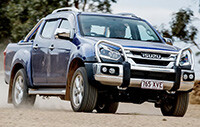 # 9 Isuzu D-Max LS-T
# 9 Isuzu D-Max LS-T
Rough ’n’ ready appeal pales when polished rivals are better at going bush too
 #8 Nissan Navara ST-X
#8 Nissan Navara ST-X
Tough and reliable aren’t enough as Navara wilts on price, spec and comfort
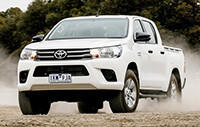 #7 Toyota Hilux SR+
#7 Toyota Hilux SR+
Unbreakable? Possibly. Unloveable? Sadly, yes, as mediocrity is allowed to prevail
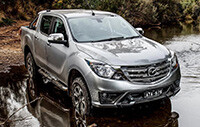 #6 Mazda BT-50 GT
#6 Mazda BT-50 GT
Still in the fight, but ultimately overshadowed by its high-flying fraternal twin
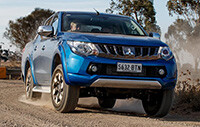 #5 Mitsubishi Triton Exceed
#5 Mitsubishi Triton Exceed
A strong and likeable mid-fielder where consistency and value are king
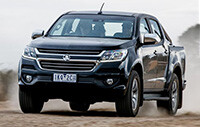 #4 Holden Colorado LTZ
#4 Holden Colorado LTZ
Colorado raises its game right when Holden needs a hero
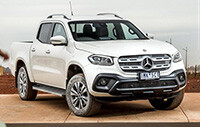 #3 Mercedes-Benz X250d
#3 Mercedes-Benz X250d
Arrives carrying great expectations; delivers only a modest load
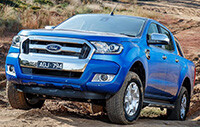 #2 Ford Ranger XLT
#2 Ford Ranger XLT
Continuous improvements make the only truly Australian-conceived ute world class
 #1 Volkswagen Amarok V6 Sportline
#1 Volkswagen Amarok V6 Sportline
Quiet achiever doesn’t have youth on its side, but still shows how it should be done
MORE: Mitsubishi Triton Range Review MORE: Mitsubishi Triton Specs, Range & Price





